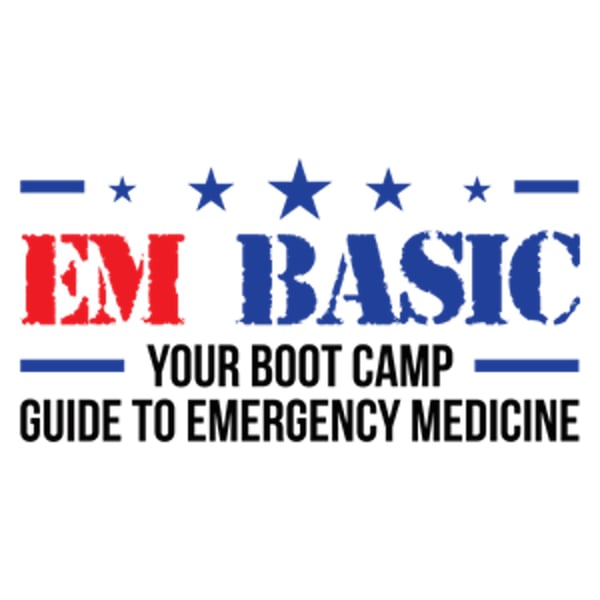Heme Onc Part 1- Oncology Emergencies
EM Basic
EM Basic LLC
4.6 • 665 Ratings
🗓️ 5 October 2015
⏱️ 30 minutes
🧾️ Download transcript
Summary
This is the first of a two part series on Heme-Onc Emergencies. In this episode, we'll discuss oncology emergencies to include neutropenic fever, tumor lysis syndrome, malignant spinal cord compression and malignant pericardial effusion. Neutropenic fever is a common chief complaint for patients on chemotherapy so we have to be good at this chief complaint.
Transcript
Click on a timestamp to play from that location
| 0:00.0 | Hi everyone, this is Steve Carroll, and you're listening to the Ambasid podcast. Today we're going |
| 0:06.3 | to be talking about hemank emergencies. Since this is a relatively broad topic, we'll be splitting this |
| 0:11.5 | into two episodes. In this first episode, we'll discuss the oncology side of hemank emergencies, |
| 0:17.3 | and talk about neutropenic fever, tumorlyysis syndrome, and other complications of malignancy. |
| 0:23.5 | The second episode will cover hematologic emergencies, such as anemia, hemophilias, ITP, and TTP. |
| 0:31.1 | You will see lots of patients with neutropenic fever in the emergency department, and they can be very sick, |
| 0:35.9 | so it's important that we know this topic hold. |
| 0:37.9 | As always, this podcast has never been presented to use of printings upon offense, the US Army, |
| 0:41.0 | or the Shawshadukee emergency program. Let's talk first about nutripine fever. Usually we know |
| 0:46.4 | this workup is coming because patients with cancer, who are on chemotherapy, are very good about |
| 0:51.6 | coming to the ED when they have a fever. |
| 0:54.5 | These patients are at high risk for infection and severe sepsis, so their oncologists do a good |
| 0:59.4 | job of telling them to come to the ED if they have a fever. |
| 1:03.0 | Nutropenic fever is obviously defined by two variables, the presence of a low white blood cell |
| 1:08.0 | count, aka neutropenia, and the presence of a fever. |
| 1:11.7 | Let's talk first about the fever component, because that's the piece of information that |
| 1:16.1 | you'll get as soon as the patients present the triage. For the purposes of defining a |
| 1:20.8 | neutropenic fever, fever is defined as an oral temp of 100.9 Fahrenheit, or 38.3 Celsius, on one single occasion, or a temperature of 100.9 Fahrenheit or 38.3 Celsius on one single occasion or a temperature |
| 1:31.1 | of 100.4 degrees Fahrenheit or 38 degrees Celsius that persists for more than one hour. |
| 1:37.9 | In my experience, patients do the right thing and usually present to the ED if they have any |
| 1:42.6 | temperature of 100.4 or 38 Celsius, even if it doesn't |
| 1:48.0 | persist for that hour. Given that these are high-risk patients, he will most likely proceed with the same |
... |
Please login to see the full transcript.
Disclaimer: The podcast and artwork embedded on this page are from EM Basic LLC, and are the property of its owner and not affiliated with or endorsed by Tapesearch.
Generated transcripts are the property of EM Basic LLC and are distributed freely under the Fair Use doctrine. Transcripts generated by Tapesearch are not guaranteed to be accurate.
Copyright © Tapesearch 2025.

